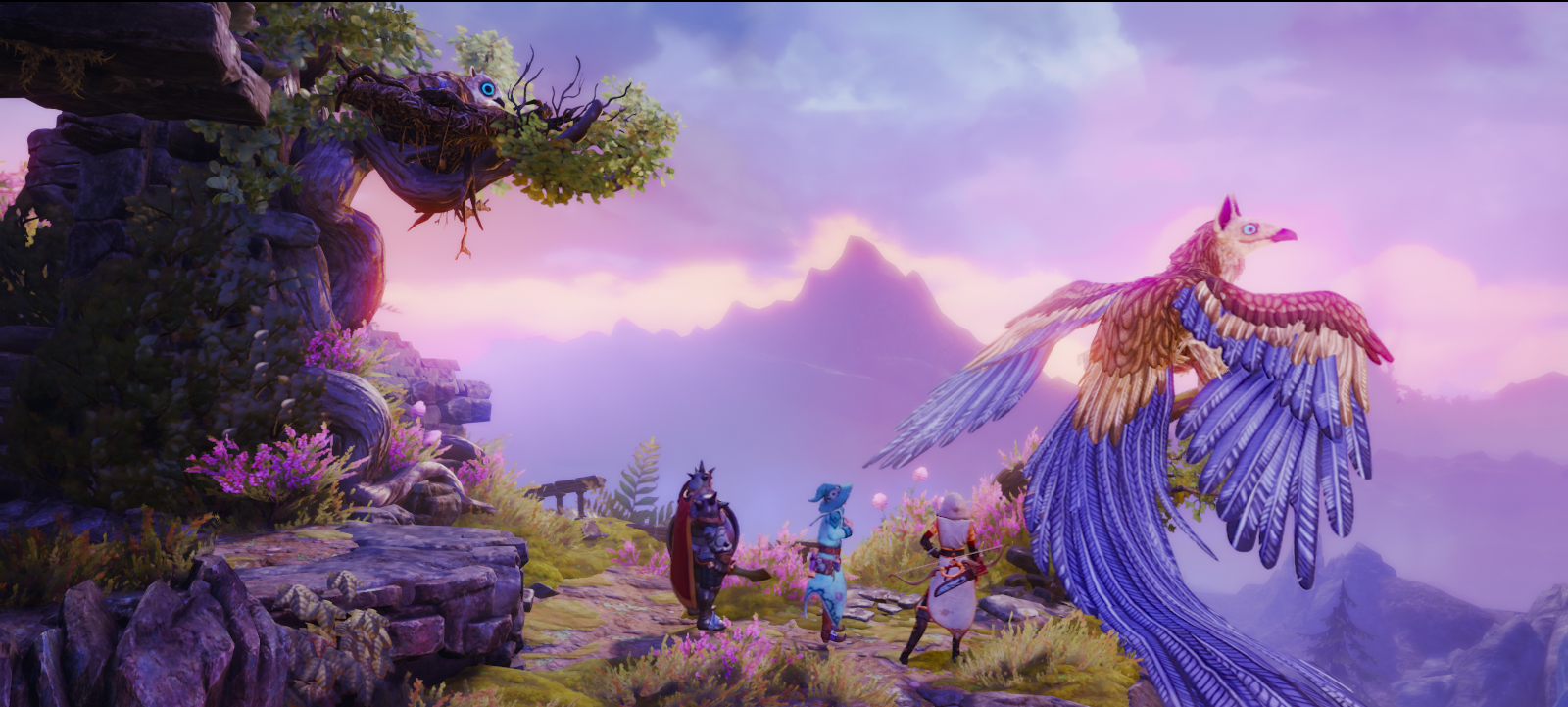
What is it? A platform-puzzle fairytale where you’re a wizard. And a thief. And a knight.
Expect to pay: $30/£25
Developer: Frozenbyte
Publisher: Modus Games
Reviewed on: GeForce GTX 1650, AMD Ryzen 5 3550H, 8 GB RAM
Multiplayer: Yes, cooperative
Link: https://www.trine4.com/
It’s not often that the fourth game in a series is considered to be an ideal jumping-in point. That’s the case here though, for a few obvious reasons. Firstly, the controls and systems are taught with a wonderful understanding of pace and communication. Secondly, the story requires no knowledge of the previous games. Thirdly, things are so similar to the first two games in the series that Trine 4 is arguably best enjoyed by players who are experiencing it all for the first time.
It almost feels unfair to highlight the similarities to what has gone before. After all, Frozenbyte attempted to address the grumbles around Trine 2’s similarity to its predecessor by moving to 3D environments for Trine 3. The result was identifiably the weakest game in the series, so it’s back to 2.5D for Trine 4. Series fans will find that it’s still the same characters, with largely the same abilities—but perhaps that’s a good thing after Trine 3.
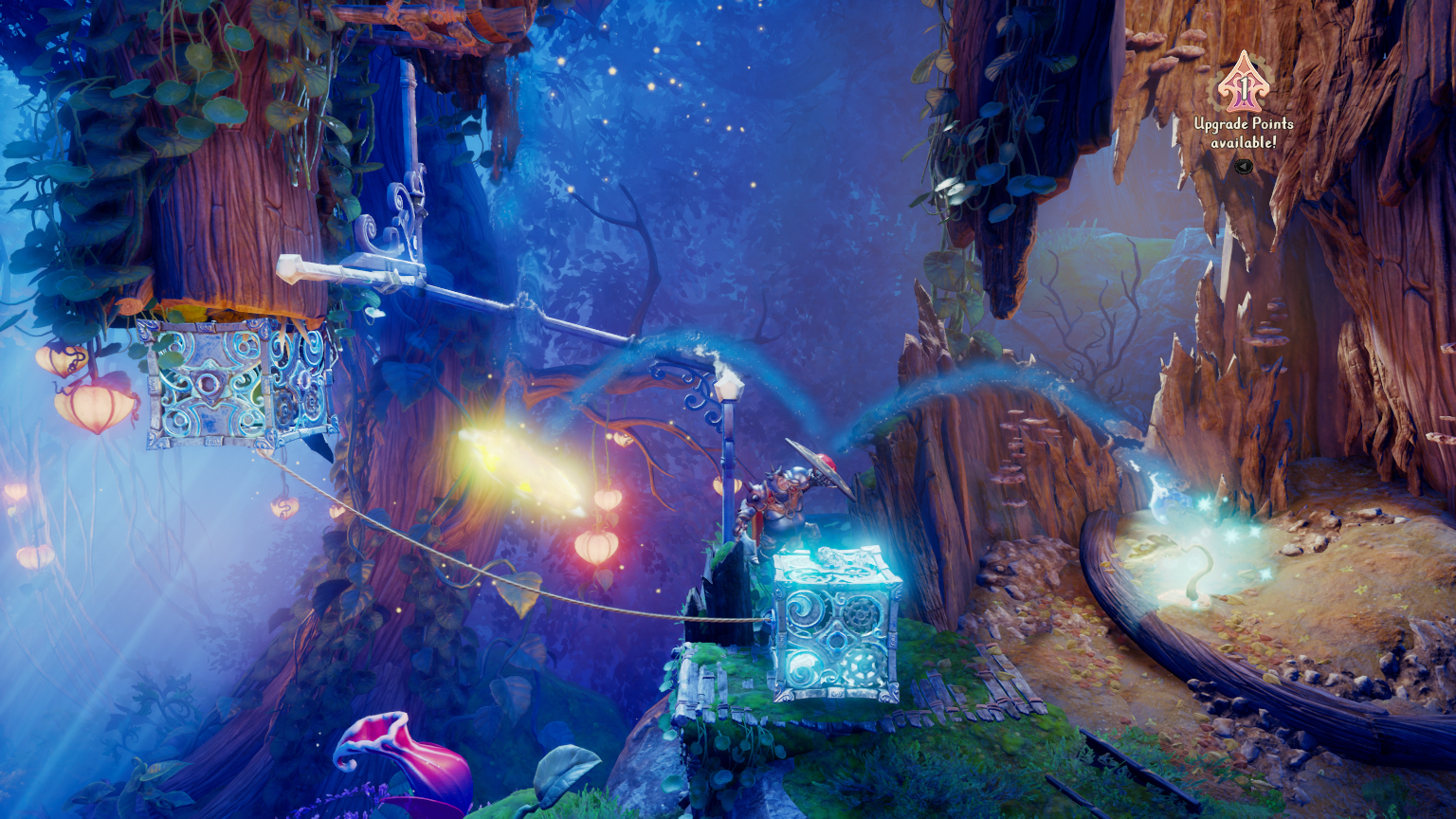
For the benefit of the uninitiated, Trine concerns three playable characters, each with unique abilities. You can play with other people, or switch between your gang solo, puzzles often changing when there’s more than one of you. There’s some platforming, and a bit of combat, but the puzzles lie at the heart of the experience.
I’ll occasionally cheese my way past a problem, as I so often do in life, with a simple but effective fix. In Trine 4’s case, this means using the wizard to conjure up a box, and levitating it to a position where the thief can jump, attach her rope in mid-air, and pull herself up. Take that, spiky pit of death! Thought you could make me use my brain, eh? Hah!
Mind you, it’s clear that the developers know people will be doing this. Many high platforms have barriers specifically designed to prevent placement of any of the wizard’s items. Just as well too, as the puzzle design is superb, and deserves to have players explore it. While the fundamentals may sound limiting—reflecting sunlight, making rope bridges, diverting water, weighing platforms down, and other familiar concepts—they are used in all sorts of ingenious ways. Sure, many puzzles I solve very quickly, but more than once I hit a roadblock that initially seems utterly insurmountable. I always persist, never frustrated, and always end up working out the solution. It’s at times like these that I experience an immense rush of satisfaction, and an intense hit of admiration for the evil geniuses behind these setups.
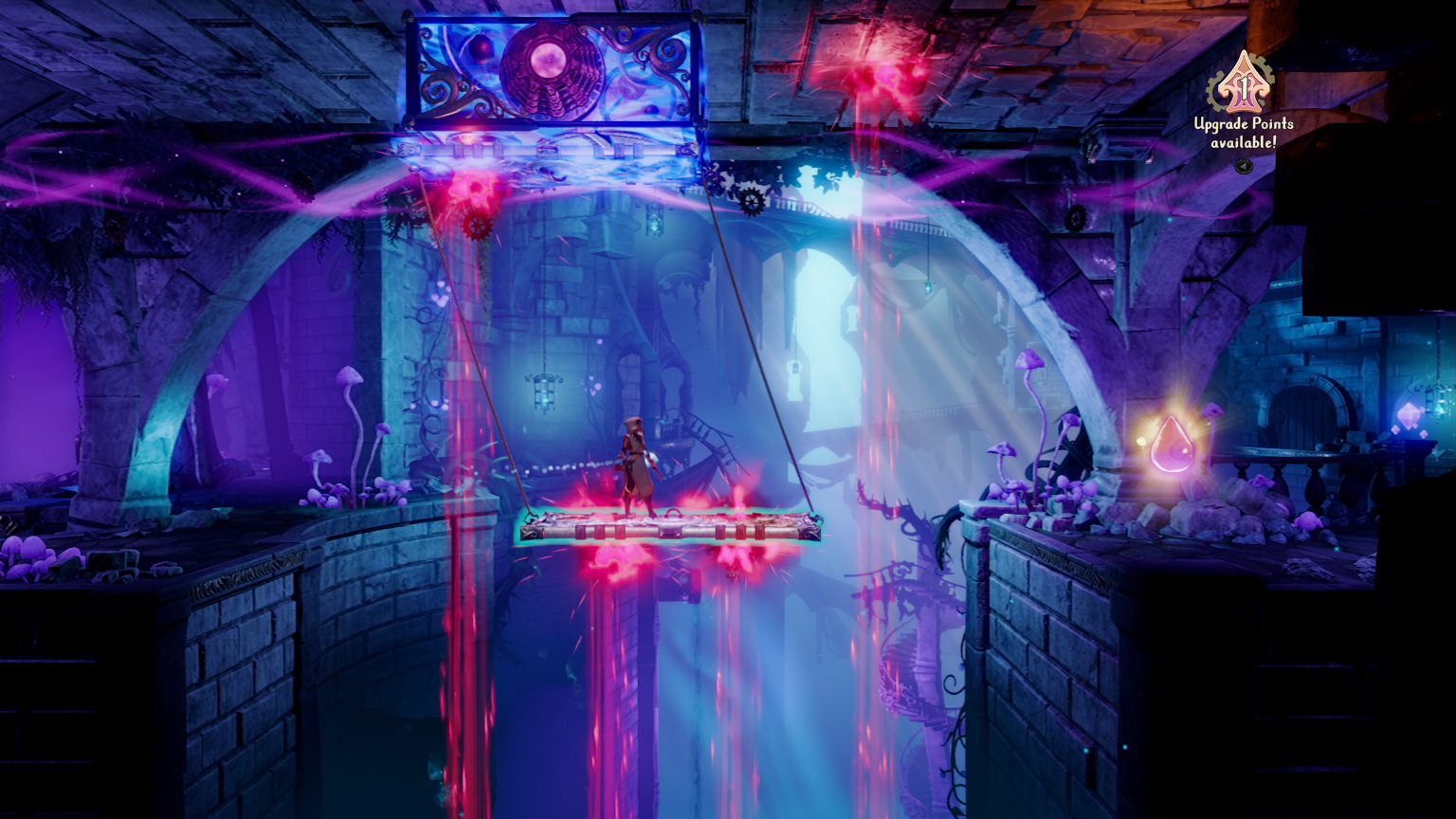
The Knight Before
Combat fares much less well. Rather than dotting enemies throughout each level, the developers have created enclosed single-screen arenas for fights with multiple foes, triggered when a player walks past a certain point (look carefully, and you might spot telltale purple smoke). The best tactic is usually to get the knight in there, mashing the attack button and using his shield to deflect any projectiles. The thief’s bow and arrow is a fair second choice, while hitting things with boxes as the wizard is awkward and silly. My reaction to each and every one of these fights is a roll of the eyes and a desire to get it out of the way as quickly as possible. It’s just not fun.
The blow of the terrible combat is softened somewhat by the overall determination to make the whole experience gentle and friendly. Checkpointing is generous, characters resurrect almost instantly outside of combat, and during those horrible fights, a fallen comrade can be brought back to life within a few seconds. Not once during my 12 hours or so playing Trine 4 did I see a game over screen. For a game that leans on its superb puzzles for its appeal, this is very much a good thing.
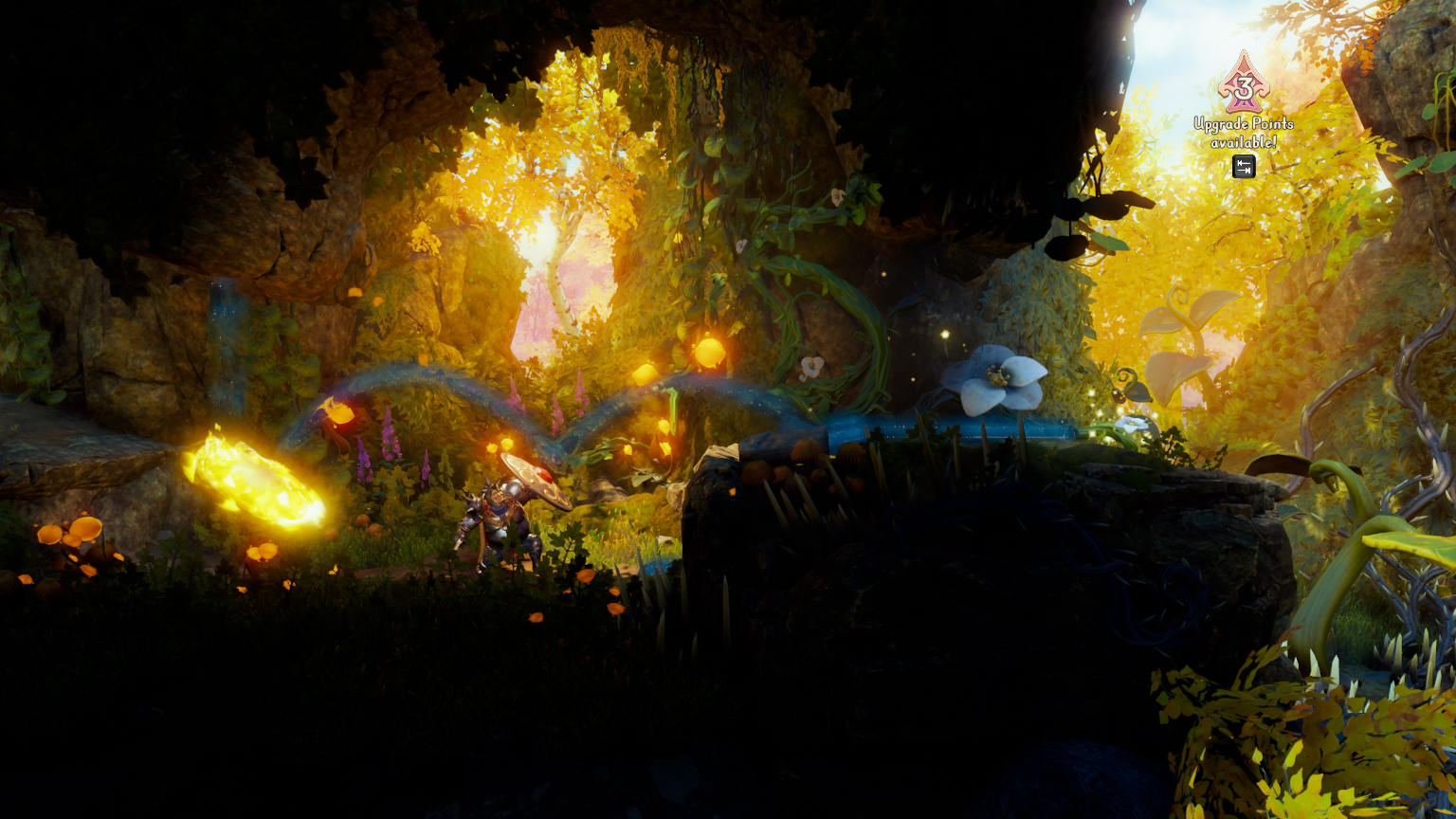
As a whole, the experience doesn’t feel complete and consistent.
Nonetheless, something soon starts to feel off about Trine 4, and it takes me a while to identify what it is. There’s so much to like. The puzzles, which I really do love; the art, which nails the dreamy fairytale vibe; the music and sound effects, which support the atmosphere of the graphics perfectly; the inclusion of a talking badger with a curious number of platforming puzzles in his house. Then I consider things holistically, and it clicks—or, rather, it doesn’t.
As a whole, the experience doesn’t feel complete and consistent. The final boss is anticlimactic and overly simple, whereas the second boss had me stumped for a while due to its reliance on puzzles. I breezed through most of the final stage, while three hours earlier I was struggling with how to progress. The story offers no cohesion either, being far too lightweight to sustain interest. Trine 4 is a series of middles sewn together with the thread of great puzzle design.
Read our review policy
Puzzle design does the heavy lifting for Trine 4, a fun but ultimately hollow experience.



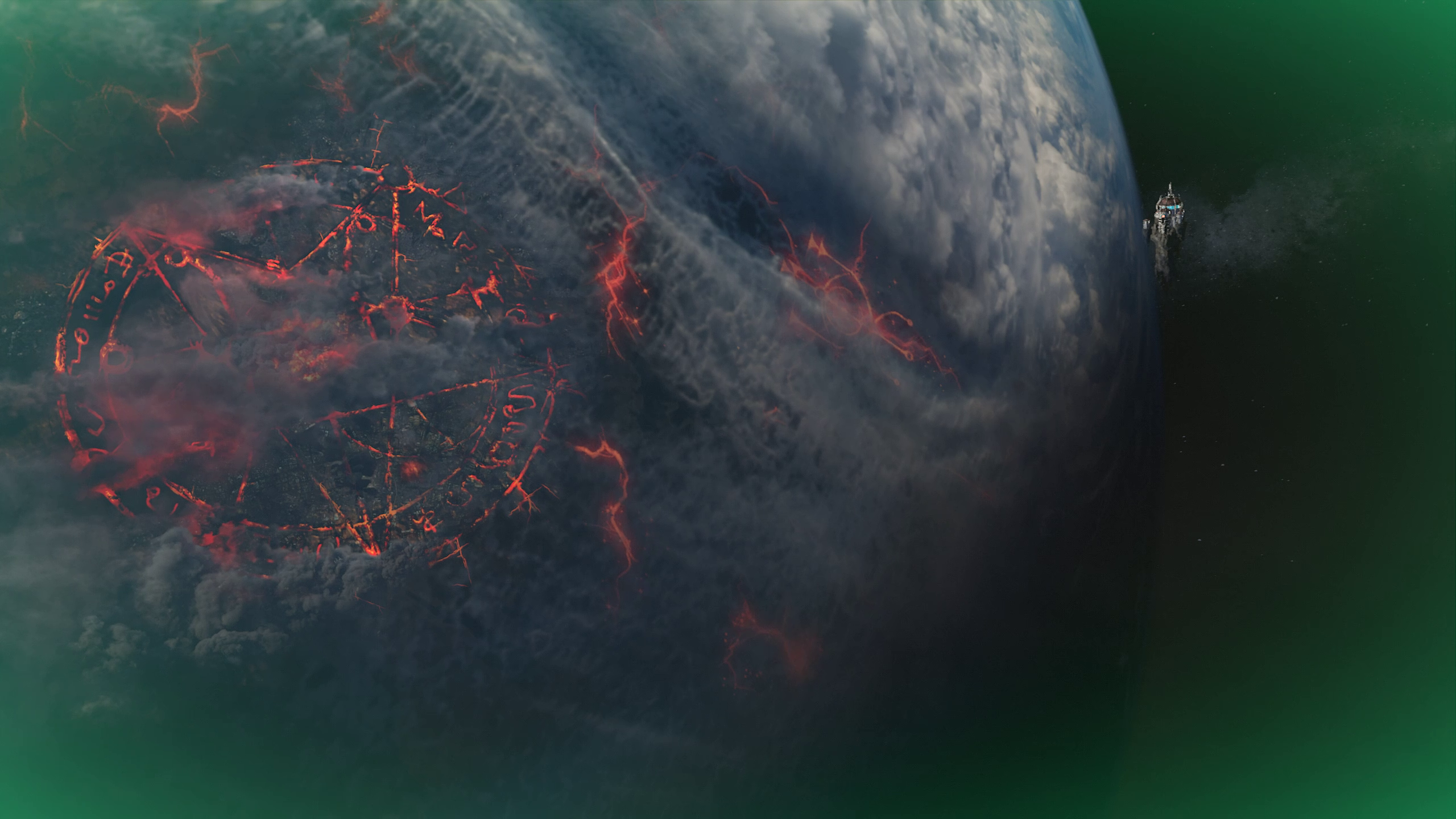
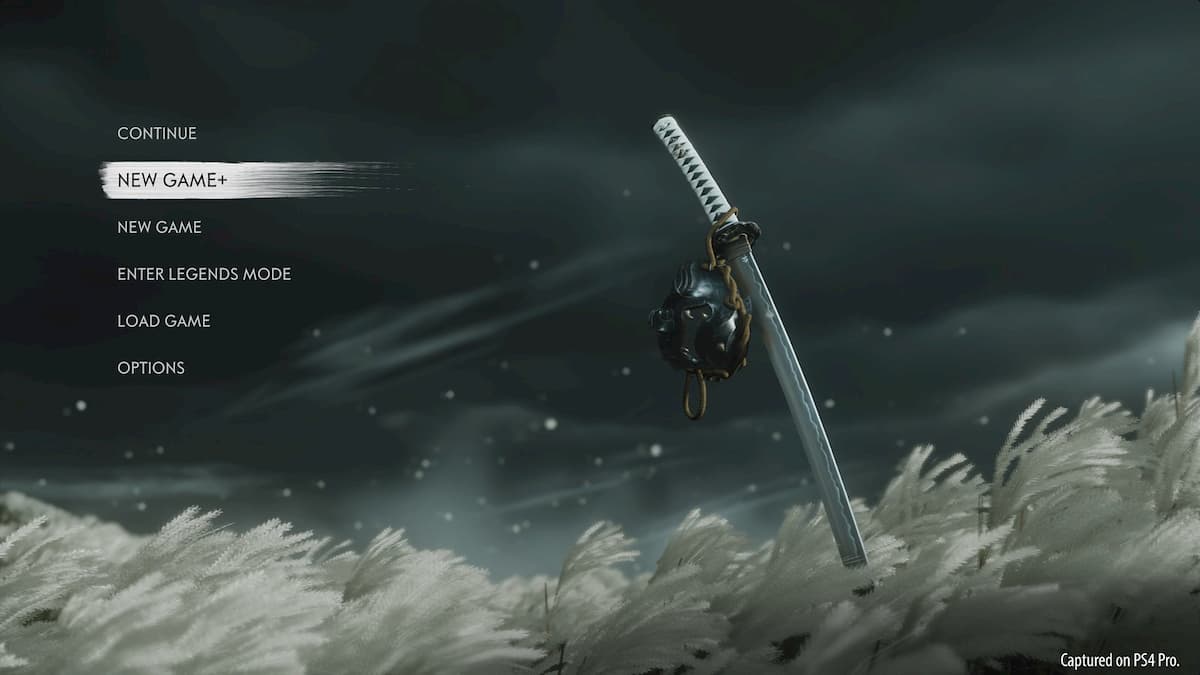


More Stories
Doom Eternal review
Review: The Last of Us Part II complicates the idea of right and wrong
Dirt 5 review